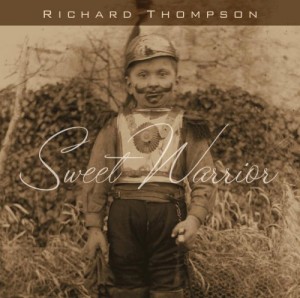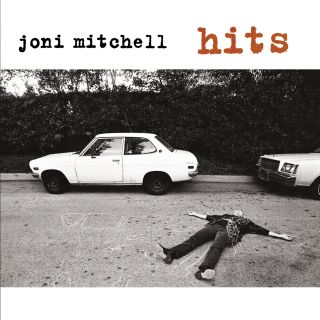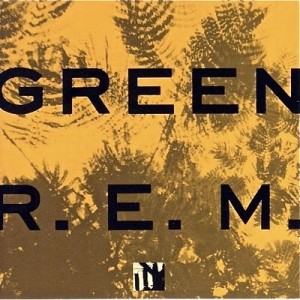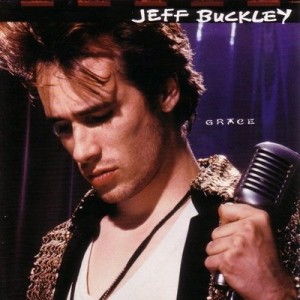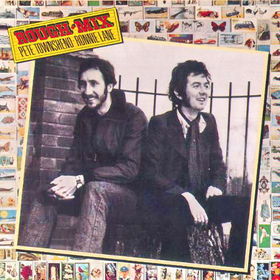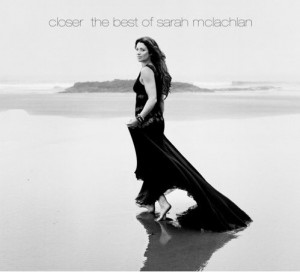
Fundadora de la legendaria banda de pop Viuda e Hijas de Roque Enroll, Mavi Díaz ha compartido el estudio y el escenario con artistas como Charly García, Gustavo Cerati, Fito Paez, Andrés Calamaro, Los Twist, Man Ray, Patricia Sosa y Daniela Herrero, en una carrera que ya alcanza cuatro décadas de trayectoria ininterrumpida, y múltiples reconocimientos (incluyendo tres Premios Gardel). Su proyecto actual es “Mavi Díaz Y Las Folkies”, banda con la que cual ha girado por Europa y Asia, y cuyo tercer disco de estudio (“Gaucha”) fue publicado a inicios de este mes.
Tuve el agrado de conversar con Mavi sobre la presentación de este nuevo álbum (a realizarse el próximo 10 de mayo en la Sala Siranush), y repasar el camino que la condujo a esta instancia especialmente prolífica de su carrera, la cual realza el valor del talento femenino dentro del folkore de raíz.
Tu carrera abarca etapas muy distintas, y recala en algunos de los nombres más significativos de la historia de la música argentina contemporánea como ser Charly García, Andrés Calamaro, Fito Paez y Gustavo Cerati. ¿De qué modos dirías que el contacto con esas personas nutrió tu evolución artística?
Las colaboraciones con músicos a los que una admira siempre son enriquecedoras, y cada una de ellas deja huella. Realmente me siento afortunada por haber tenido la suerte de poder participar en shows, discos, o compartir proyectos con semejantes artistas.
Concretamente, ¿te animarías a destacar o señalar algo que atesores de cada una de estas cuatro personas que acabo de mencionar?
Charly fue y es mi ídolo de toda la vida. Participé en la grabación de “Say No More” en Madrid y fue muy amoroso conmigo, como estábamos solos esos días compartimos mucho tiempo, y fue un aprendizaje bestial para mí. Con Fito grabamos el concierto “No Sé Si Es Baires o Madrid” pero ya habíamos colaborado con Viudas en sus primeros discos y siempre es un placer trabajar con él. Con Andrés grabé en su disco “Por Mirarte” hace mucho tiempo y también tocamos en vivo. Y qué decir de Gustavo… un capo como pocos. Grabé y trabajé con él muchas veces, incluso él produjo el germen de lo que fue mi primer disco solista. Nos unía una hermosa amistad. Ya ahora trabajo con su hijo Benito, junto a Tweety González produjimos sus dos primeros discos.
Y en lo que respecta a tu proyecto más emblemático (Viuda e Hijas de Roque Enroll), ¿cómo se amolda (o dialoga) con lo que son Las Folkies? ¿En qué aspectos sentís que su espíritu está latente en tu proyecto actual? Al respecto, me resulta muy simpático un hashtag que solés emplear: #rockthefolk.
Viudas y Folkies son sin duda los proyectos más importantes de mi vida. Es bastante obvio pero lo que tienen en común soy yo y mi forma de abordar la música y la lírica. Yo siento que Las Folkies, si bien hacemos folklore tradicional en su estructura y en su instrumentación, la rockeamos muchísimo. Nuestra actitud es rockera, nuestra estética y nuestra forma, pero como digo, siempre muy respetuosas de las raíces y de lo tradicional. Siempre decimos que nos gusta lo moderno de antes y eso mismo nos pasaba con las Viudas.
¿Qué motivó la fundación de las Folkies? ¿Cómo se establecieron los vínculos entre ustedes?
La idea de armar Folkies fue de mi manager de entonces, Maya Vázquez. Yo venía tocando con unos capos tremendos como Gaby Luna, Franco Luciani, Daniel Patanchón, pero cada uno de ellos ya tenía proyectos propios que les demandaban dedicación y empezaban a complicarse las agendas. Entonces a Maya se le ocurrió convocar a las chicas y fue la mejor idea que alguien pudo tener jamás. Pusimos una fecha como para ver si había química entre nosotras y si nos sentíamos a gusto tocando juntas y fue amor a primera vista, un romance que afortunadamente se nutre y se renueva cada día de estos 9 años que ya llevamos juntas.
¿En qué se diferencia el nuevo álbum de los dos anteriores, “Todo Sí!” y “Sonqoy”? Te he escuchado decir que es tu disco más personal pero a su vez más colectivo. ¿Cómo se traduce eso en el plano musical?
“Sonqoy” fue nuestro disco bautismal, nuestra primera experiencia juntas en estudio y contiene canciones que yo venía componiendo de antes de conocer a las chicas. “Todo Sí!” ya muestra a unas Folkies más “rodadas” con muchos shows y viajes encima. Ahora, en este disco comienza la composición en conjunto. A diferencia de “Todo Sí!” que fue grabado a lo largo de todo un año, entre giras y viajes en los cuales tocábamos los temas, “Gaucha” tomó forma en 10 días de estudio. Muchas de las canciones ven la luz por primera vez en el estudio, muchos arreglos son creados en el momento de grabar. Me gusta una definición que hizo el periodista Gerardo Rozin: “Gaucha” es un disco “urgente”, necesario.
¿Ha incidido en esto el reconocimiento que han recibido en materia de galardones, incluyendo los Premios Gardel?
Los premios y los reconocimientos son siempre gratos porque de alguna manera reafirman que una está en el camino correcto. “Todo Sí!” nos dio muchas alegrías, entre ellas dos nominaciones y un Gardel, lo cual nos llena de orgullo. Pero una no piensa en eso cuando gesta un disco, especialmente “Gaucha”, como digo, nace de una necesidad de poner en palabras y en música los sentimientos que nos atraviesan como músicas, como mujeres, en lo personal y en lo colectivo. Por supuesto sin perder la alegría y nuestra pasión por la danza nativa que es también un motor muy fuerte del disco.
El viernes 10 de mayo presentan oficialmente este nuevo disco en sociedad, ¿qué podrías adelantarnos de este evento en la Sala Siranush de Palermo?
Estamos preparando un show hermoso con una puesta preciosa a cargo de Diego Wulff y Sofía Gabrieludis, vamos a tocar primero el disco nuevo en el orden, como hicimos con “Todo Sí!” porque queremos que la gente viaje disco adentro y se meta en el universo que proponen las canciones y después por supuesto tocaremos todos los “hits” y haremos una Folkie peña a nuestro estilo.

¿Y cómo sigue su agenda de presentaciones luego?
Después del concierto Martina parte a Europa en gira con Peteco, yo viajo también a Europa a cerrar una gira que haremos en Octubre y durante julio y agosto gira nacional por Argentina
¿Cómo ves la escena musical en Argentina, y en la región? Y dado que con las Folkies han llegado a presentarse no solo en Europa sino también en Asia, ¿qué paralelismos podrías trazar? ¿Qué podríamos incorporar del esquema que existe en esos países a los nuestros? Y a su vez, ¿en qué sentidos ellos pueden tomarnos como referentes?
Argentina tiene una riqueza musical enorme en todos sus géneros y en todas sus regiones, pero a diferencia de otros países donde hemos estado y tocado, aquí cuesta mucho lo nuevo. La gente generalmente no sale a buscar propuestas nuevas, va más bien a lo que conoce o a lo que escucha mil veces en los medios. Nosotras hemos llegado por ejemplo a salas enormes en USA preguntándonos preocupadas quién iría a vernos y sorprendernos con una sala llena de gente que va a descubrir música que no conoce para nada. Otra buena costumbre que tienen afuera es que están acostumbrados a comprar música, compran discos físicos y en las tiendas digitales. Independientemente de la crisis argentina, nosotros somos más de querer todo gratis. Pero sí que somos muy respetados en el mundo por nuestra creatividad.
En lo estrictamente personal, ¿tenés alguna otra actividad programada, como ser colaboraciones con otros artistas? ¿Hay algún artista nuevo con el que quisieras trabajar?
En “Gaucha” tuvimos el honor de tener dos invitados de lujo: Marcela Morelo y Franco Luciani. En el mes de Julio vamos a hacer un espectáculo junto a Teresa Parodi y Marian Farías Gómez, dos de mis artistas referentes a quienes admiro y adoro. Voy a participar también en un disco de Ska Beat City que van a versionar un tema mío de Viudas. También acabo de rodar mi participación en un documental para Netflix sobre el rock en Latinoamérica. Como productora no dejo de sorprenderme de la nueva camada de músicas talentosísimas que hay, y sí, me gustaría producir a muchas de ellas.
Te agradezco enormemente por tu tiempo, y les deseo todos los éxitos con el nuevo disco. ¡Esperamos verlas en Uruguay en algún momento!
¡Ojalá así sea!
(Fotografía de Mavi Díaz & Las Folkies: Pablo Scavino)

